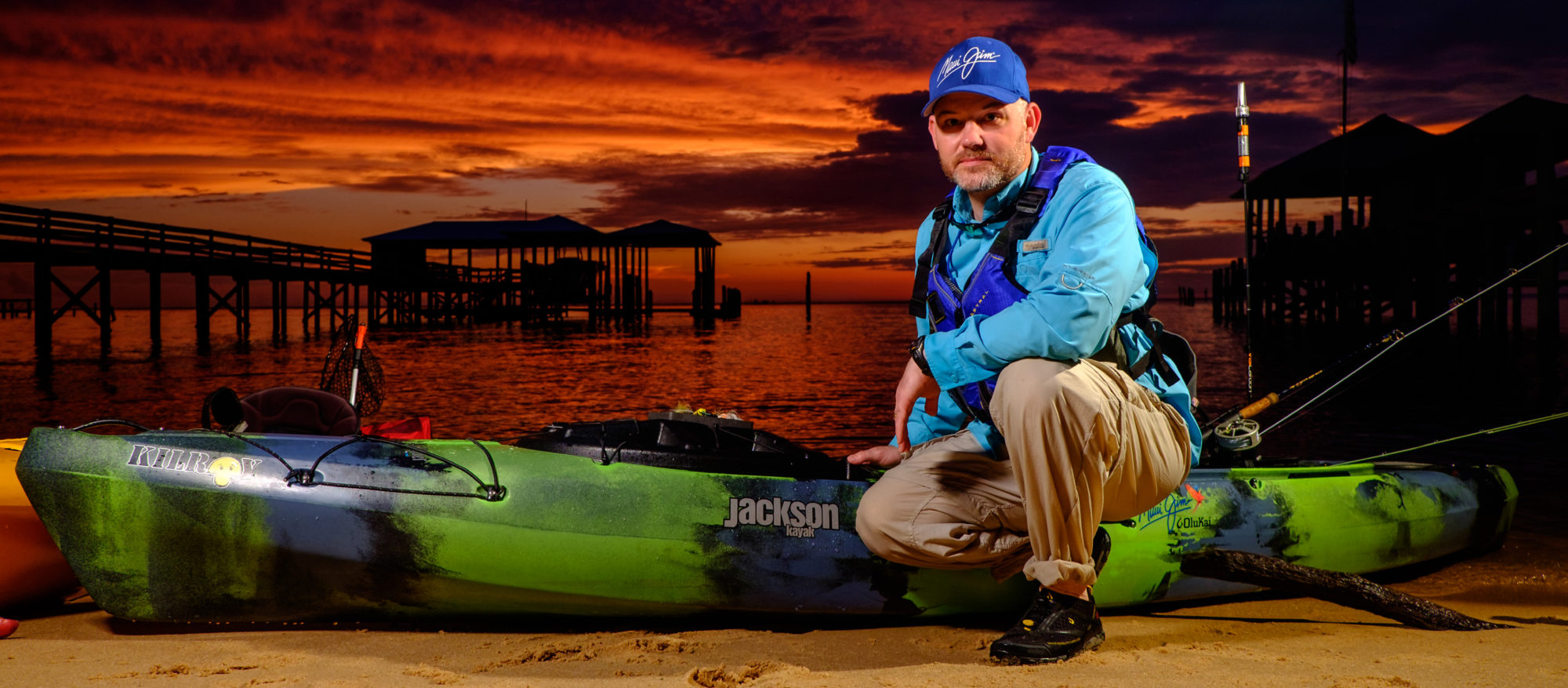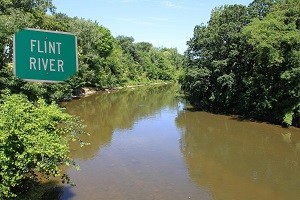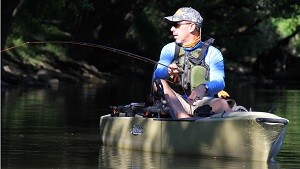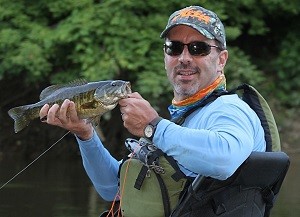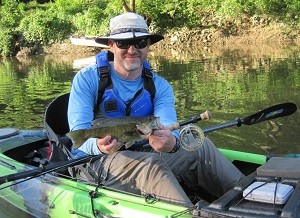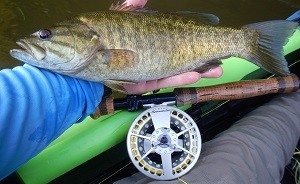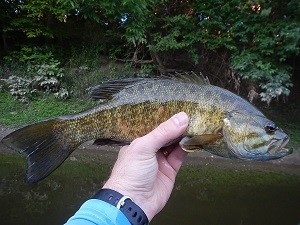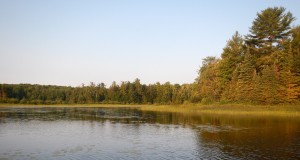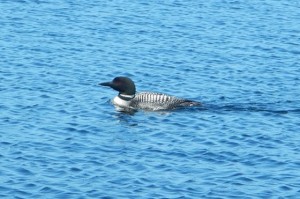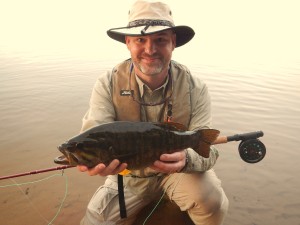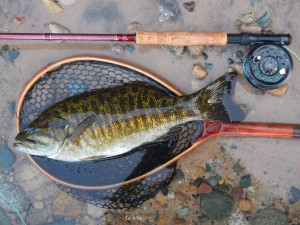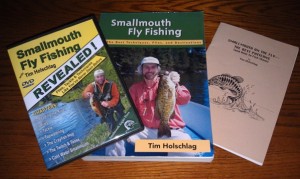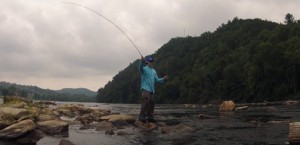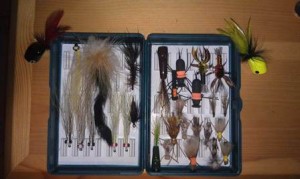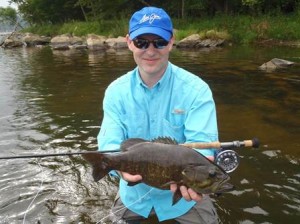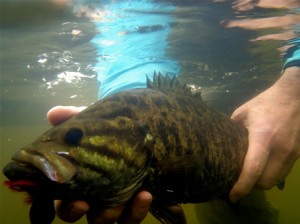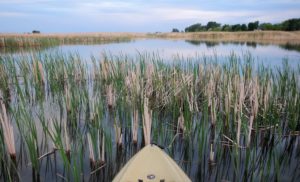
Sneak attack on Lake St. Clair bass! – Photo by Aaron Rubel
When the sun sets slow and fire flies rise in margins between fields, forest and still water, the spirit of kayak anglers awaken on marsh laden edges of Lake St. Clair in search of smallmouth and largemouth bass.
Lake St. Clair sits between Lake Huron to the north (upstream) and Lake Erie to the south (downstream) in Southeastern Michigan. It is one of the premier smallmouth bass fisheries in the United States, where notably the healthy largemouth bass population is often overlooked. Fortunately, access for kayak anglers in this large and popular recreational boating lake is ample via canals, river channels, by slipping the yak in along convenient road side pull offs, as well as little used and out of the way island launches. The lake is divided between US and Canada shoreline options. Adventurous paddlers, through studying maps and strategic launch points, can navigate narrow openings through high grass to out of the way freshwater flats fishing.

Image Credit: Google Maps
There are a lot of great sub-surface flies to lure Lake St. Clair bass into a tussle, but I’m a sucker for top water triggers like hoppers, poppers, and large foam ant patterns. The surprise of a line gone tight on a meaty streamer in turquoise depth is thrilling, but there’s nothing like a heavy smallie or largemouth rolling on a fly you’ve presented upon glassy water on a warm and beautiful evening.
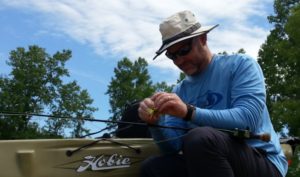
Author of IcastInaYak, Aaron Rubel, tying on a grasshopper fly.
On a normal day of fishing Lake St. Clair, when one bass is found, numerous others are there for the taking. On one recent excursion, the night drew late and I left both smallmouth and largemouth feeding upon decision to make my way back through the marsh to the takeout. It’s ironically a good feeling to have caught several nice fish and have to turn your back on others in hopes for that next trip out.
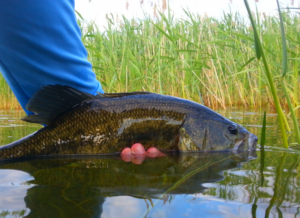
Releasing a largmouth on Lake St. Clair – Photo by Aaron Rubel
The prized bass on Lake St. Clair are the bronzebacks. The average sized smallmouth on Lake St. Clair is three pounds, which is hard to believe unless you’ve actually experienced it. On some days, the numbers of heavy fish will spoil the angler not residing close enough to call the lake their home water.

Lake St. Clair smallmouth at dusk – Photo by Aaron Rubel
If you are looking forward to a trip to Lake St. Clair, you should be prepared with fly patterns simulating forage of gobies, large crayfish (or crawfish if you’re from the deep south), and baitfish patterns with coloration of perch and bluegill. The average depth of the lake is only eleven feet, and so be aware of approaching storms that could quickly change surface conditions. Wear your PFD, and post a flag that makes the kayak visible in case very large and high speed boats that often traverse the lake approach. Quaint communities dot the shoreline of Lake St. Clair, where festivals and old fashioned eateries abound. Fish grow fast and thick in this fishery, so be prepared for an adventure that you will be wishing never had to end.
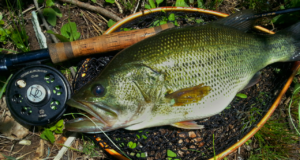
A fatty on the fly – Photo by Aaron Rubel
Copyright 2017 by icastinayak.com. All rights reserved
Brought to you by:

